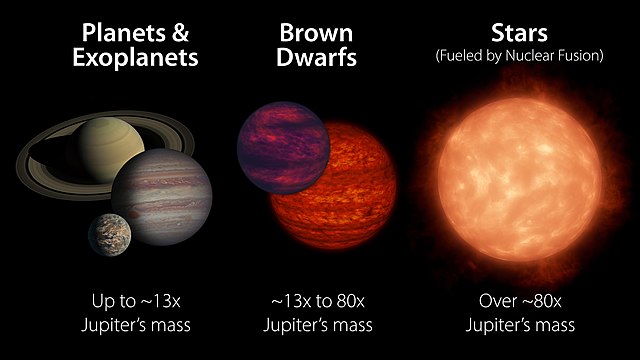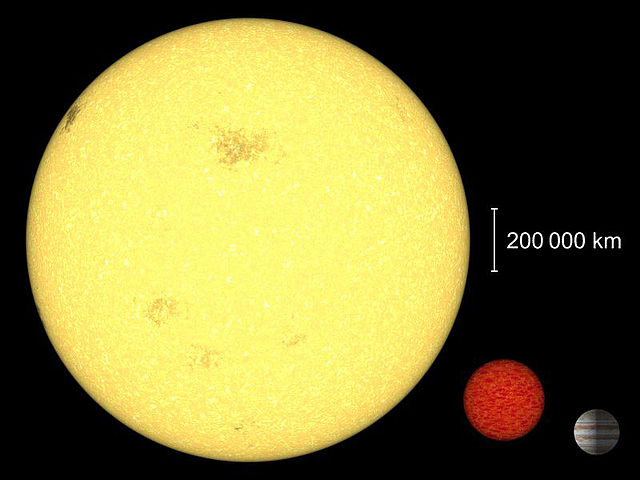SIMP J013656.5+093347 is a brown dwarf or planetary mass object at 19.9 light-years from Earth in the constellation Pisces. It belongs to the spectral class T2.5 and its position shifts due to its proper motion annually by about 1.24 arcsec in the right ascension.
Artist's impression of SIMP J013656.5+093347 and its auroras. Credit: Chuck Carter, Caltech, NRAO/AUI/NSF
SIMP0136 with the legacy surveys. For a planetary-mass object it is relative bright (apparent J≈13.4).
Brown dwarfs are substellar objects that have more mass than the biggest gas giant planets, but less than the least massive main-sequence stars. Their mass is approximately 13 to 80 times that of Jupiter (MJ)—not big enough to sustain nuclear fusion of ordinary hydrogen (1H) into helium in their cores, but massive enough to emit some light and heat from the fusion of deuterium (2H). The most massive ones can fuse lithium (7Li).
Artist's concept of a T-type brown dwarf
The smaller object is Gliese 229B, about 20 to 50 times the mass of Jupiter, orbiting the star Gliese 229. It is in the constellation Lepus, about 19 light-years from Earth.
Planets, brown dwarfs, stars (not to scale)
A size comparison between the Sun, a young sub-brown dwarf, and Jupiter. As the sub-brown dwarf ages, it will gradually cool and shrink.






